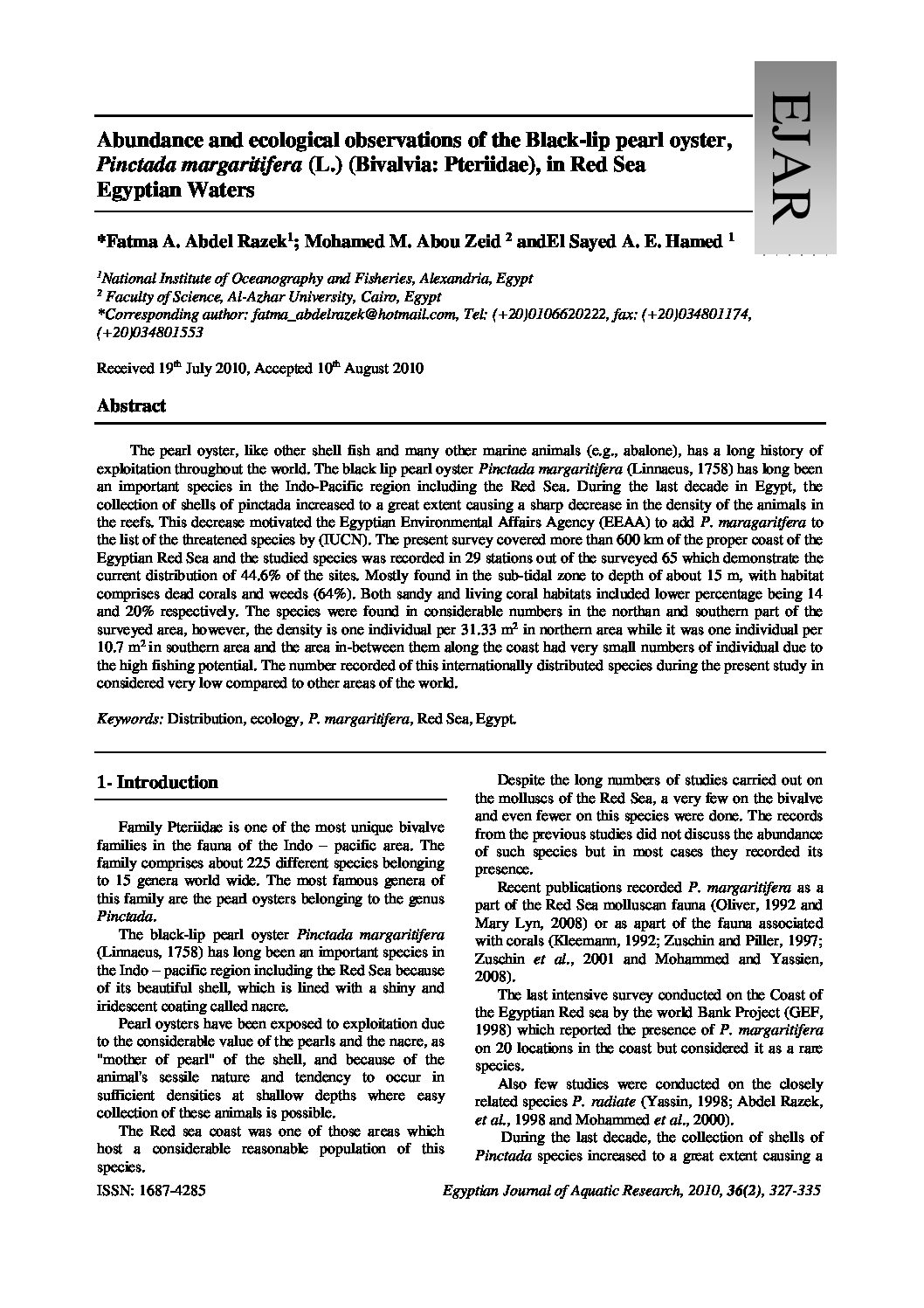Categories
vol-36The role of sediment pore waters in the fertility of Abu Qir Bay,
Egypt
Ehsan Abo El khair, Fahmy, M.A. and Aly El Deen, M.A.
National Institute of Oceanography and Fisheries, Anfoushi, Egypt.
Received 8th November 2010, Accepted 20th December 2010
Abstract
Due to the construction of Aswan High Dam at 1964, the annual means of discharged Nile water through
Damietta and Rosetta Estuaries, into the Mediterranean Sea was sharply decreased from 42.9 x109 to lesser than 1.00
x 109 m3 before and after the damming construction, leading to a considerable drop in the amount of nutrients, fish
production in addition to the change in the hydrographical features of the Mediterranean waters off the Egyptian
Coast. Recently, a noticeable increase in the amount of fish production in spite of lacking the discharged Nile water
into the sea was observed. Such increase in the fertility was suggested to be as a result of the anthropogenic effects
from land based sources which replaced the nutrients of fresh Nile waters. Such condition attracted the attention of
scientists to follow up the changes in water quality of the Abu Qir Bay and adjoining Mediterranean waters from
one side and to evaluate the impacts of these changes on the fertility of water column from the other side.
Accordingly, the present investigation was undertaken to study the concentrations of dissolved nitrogen, phosphorus
and silicate in both bottom sediment pore waters and corresponding overlying water column at different sites of Abu
Qir Bay and adjoining Mediterranean waters during seasonal cruises. In order to evaluate the consequently, see to
what extent it may contribute in the fertility of eutrophic water layers of these regions. The present study
demonstrated that, the benthic fluxes lead to a considerable increase in fluxes of nitrate (53μg/m2
.dayNO3-N),
ammonium (10.50mg/m2
.dayNH4-N), phosphate μg/m2
.dayPO4-P) and silicate (1.76950mg/m2
.daySiO4-Si) in
the corresponding overlying water column. This could be responsible for the increasing fertility of the investigated
regions rather than those of the anthropogenic effects. Factors affecting the mechanism of nutrient diffusion were
investigated.
Keywords: pore water, eutrophic, anthropogenic, benthic fluxes







